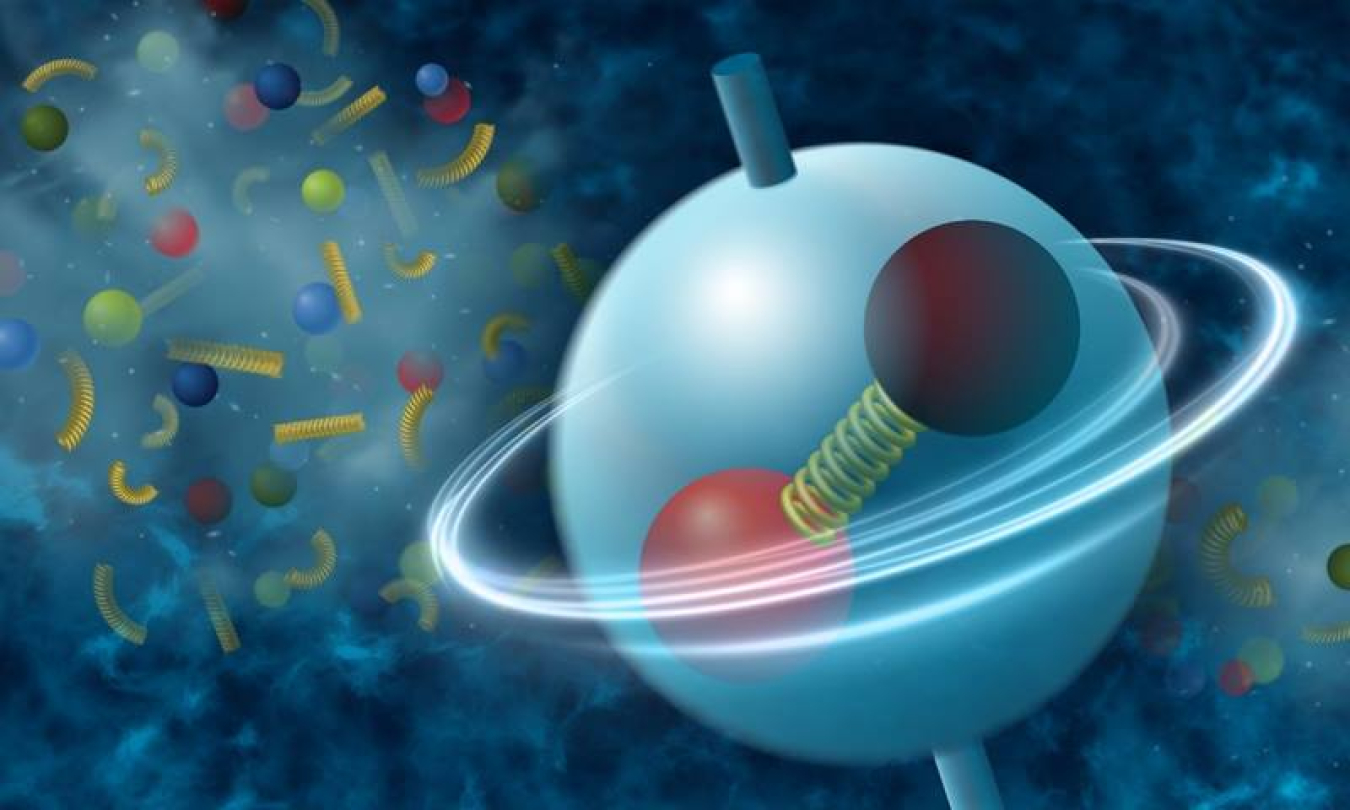
The Science
Certain particles that emerge from a hot soup of matter generated in collisions of atomic nuclei appear to have a preferential “global spin alignment.” The collisions melt the boundaries of ordinary protons and neutrons to set free their innermost building blocks—quarks and gluons. The spin preference cannot be explained by conventional mechanisms such as the magnetic field strength or the “swirliness” of hot quark matter created in these collisions. Instead, a new model suggests that local fluctuations in the strong force, which governs the interactions of quarks and gluons, may play a role in triggering the preference.
The Impact
Scientists had not realized previously that the strong nuclear force (or strong force) could influence particle spin in this way. If the findings and explanation withstand further scrutiny, the global spin alignment measurements will give scientists a new way to study local fluctuations in the strong force. Understanding this force—the strongest and least understood of the four fundamental forces in nature—is a central goal of nuclear physics. To conduct this research, scientists use particle colliders to recreate the hot quark-gluon soup of the early universe.
Summary
Scientists studying particle collisions at the Relativistic Heavy Ion Collider (RHIC), a Department of Energy Office of Science user facility for nuclear physics research, have previously observed spin preferences for particles that have two possible spin orientations—like the north and south poles of a planet. Recent analyses sought to measure the spin alignment of particles called mesons, which have three possible spin orientations. Some mesons showed no preference, but phi mesons (made of a quark and antiquark of the same “flavor”) did. Theorists’ explanations using conventional mechanisms, including the magnetic field and swirliness of the quark-gluon plasma, came up with a lower value than the scientists had measured.
Recently, a new model developed by nuclear theorists added local fluctuations in the strong force within the quark-gluon plasma. That model and the STAR Collaboration data matched up. The new model includes an explanation, related to the flavors of quarks that make up a meson, for why some mesons have a global spin alignment preference while others do not. Future experiments at RHIC will test this idea and the approach of using phi mesons’ global spin alignment as a way to study local strong-force fluctuations.
Contact
Aihong Tang
Brookhaven National Laboratory
[email protected]
Funding
This research was funded by the Department of Energy Office of Science, Nuclear Physics program, the U.S. National Science Foundation, and a range of international organizations and agencies listed in the scientific paper.
Publications
Abdallah, M.S., et al. (STAR Collaboration), Pattern of global spin alignment of Φ and K*0 mesons in heavy-ion collisions. Nature 614, 244–248 (2023). [DOI: 10.1038/s41586-022-05557-5]
Related Links
Data Reveal a Surprising Preference in Particle Spin Alignment, Brookhaven Lab news release
'Perfect Liquid' Quark-Gluon Plasma is the Most Vortical Fluid, Brookhaven Lab news release on earlier spin preference results

